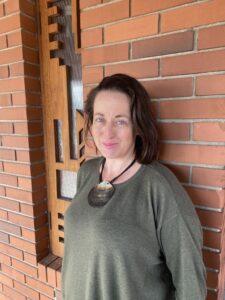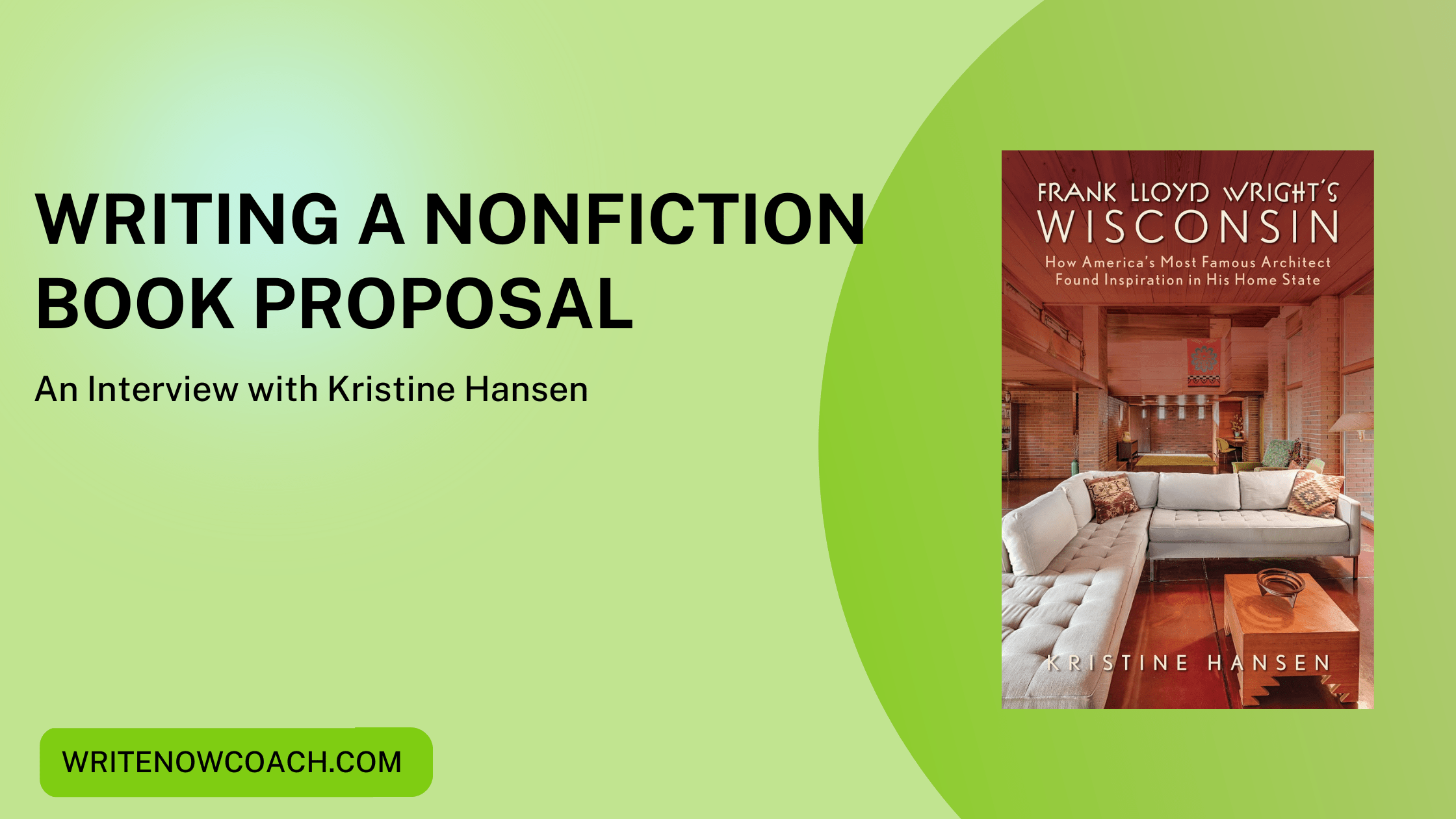Writing a Book Proposal
June 6, 2023
Note From Rochelle
Dear writers,
I have a fun new tool to share with you! Since becoming an affiliate, I’ve been playing around with QuickWrite—a futuristic, magical program that allows authors to get their books written faster.
You can use QuickWrite to build out your ideas, test a chapter section, generate outlines, and much more.
My colleague, Sandra Beckwith from Build Book Buzz asked the creator of QuickWrite, C.J. McDaniel, about the tool and plagiarism. He said, “First, the content being generated is original, and the algorithms & AI do not copy information. They generate responses to your queries. … The information you receive back will be original to you; even if someone else gave it the exact same information, they would still get different results. (https://buildbookbuzz.com/quickwrite-review/)
If you’re interested in getting QuickWrite, I have a special link for you: LINK (You can save $300 on lifetime access through June 15th!)
Today I am delighted to welcome my colleague Kristine Hansen to the blog to talk about her new book, Frank Lloyd Wright’s Wisconsin. She provides detailed information about how she drafted and pitched her book proposal. If you want to meet Kristine, she will be appearing at Boswell Book Company in Milwaukee on Friday, June 9 at 6:30 PM. You can learn more and register here: https://www.boswellbooks.com/upcoming-events
Happy writing,
Rochelle, the Write Now! Coach
Writers@Work: Writing a Book Proposal
An Interview with Kristine Hansen
By Rochelle Melander
Welcome to the blog—and congrats on your new book, Frank Lloyd Wright’s Wisconsin: How America’s Most Famous Architect Found Inspiration in His Home State. Tell us about it!
America’s most famous architect, Frank Lloyd Wright, was born in 1867 in the rolling hills of Richland Center, Wisconsin, to a family of Unitarians. Even with world-class commissions like New York City’s Guggenheim Museum, his organic architecture remains rooted in Wisconsin’s landscape, from affordable-housing prototypes in Milwaukee to his summer home and architecture school in rural Spring Green. This comprehensive guide to Wright’s designs (and those of his protégés) that are open to the public—as well as insider historical information about sites now demolished, and those available for “drive-bys” only—is for the architecture or history fan looking for tours, overnight stays, or creative inspiration.
I’m curious about how this book came to be—can you talk about the proposal and writing process?
I’m lucky in that I already had a publisher. Because Globe Pequot Press published my first two books (Wisconsin Cheese Cookbook: Creamy, Cheesy, Sweet, and Savory Recipes from the State’s Best Creameries and Wisconsin Farms and Farmers Markets: Tours, Trails and Attractions) we already had a relationship, but a publisher is never required to contract all book ideas their authors propose. You still have to propose an idea, including a potential title, description, table of contents, sample chapter, author bio, marketing plan, and how your book will be different from comparative titles. What makes a publisher say “yes” to an idea is access. What does the author know about the subject? Can the author easily interview and research? Because I live in Wisconsin, it was very doable—both financially and intellectually—for me to write a book about a topic within the state. I had also already published articles about Frank Lloyd Wright-designed projects. Not only did this show the publisher that I know the subject, it helped me in my research. I did not have to start at zero.
It’s not as important that articles be published in top markets before pitching a book. It might be such a niche topic that the New York Times would never cover anyway. Or that the only credibility for an author comes from bylines. Many books are derived from the author’s life experience. What if I had grown up in a Frank Lloyd Wright-designed house (sadly, I did not) or studied architecture as an undergrad (no to this, too)? Either of these two might entice a publisher and establish that, yes, I have more than base-level knowledge of the subject.
As for the writing process, this is where you often get a different answer from every author. I can’t write until it’s nearing that drop-dead deadline. For my last three books, I did most of the writing in a six-week window, essentially clearing my schedule of travel and other writing projects. I like to think this is not the same as procrastination! I’m simply a fast writer. I started my career in newspapers, covering city government, elections, and crime, three topics that are largely reactionary and can’t be written until the event takes place. But other writers feel compelled to start writing sooner. From the time this book was contracted—in November of 2021—to when it was due—July of 2022—this was only eight months. Unfortunately, this is becoming more and more typical in publishing. This is why it’s important to do due diligence on proposals. Figure out right away how you will structure a book. And know that, with traditional publishing at least, you are not writing on an island. You have an editor and a copy editor to guide you along after the draft is submitted.
I imagine this book took a lot of time to research. What did you learn about doing research that you can pass onto the readers of our blog?
Patience! There is no directory of Frank Lloyd Wright homeowners that I know of and so it was a combination of reading published articles about Wright-designed homes (and capturing the stewards’ names) and sending letters by snail mail (I’m pleased to say this worked in at least two cases). It was like peeling the layers of an onion as I integrated myself into the Wright community. Everyone I talked to knew someone else I could talk to. When one Wright expert shared a Word document with me of Wright stewards in Madison I felt as if I’d struck gold.
With Frank Lloyd Wright’s Wisconsin, I did something I’ve not done with any other book, which is to invite experts to read some of the chapters and make suggestions. Some of these experts have made it their life’s work to study Wright and have done so for three or four decades. This was an uncomfortable process of making myself vulnerable, but I’d rather have these mistakes be pointed out while we can still correct them, and not after the book is published.
What tips do you have for writers who want to break into your niche—writing about architecture, travel, food, and more? Where could they start?
Every community has some kind of publication, whether it’s a city magazine, daily newspaper, arts/culture weekly, or online events guide. If you have no published writing samples, contact the editors of these outlets and inquire about writing opportunities. Ask if they like to assign out articles (some have very tightly focused topics you might never hit on yourself) or accept pitches (I prefer pitches because it gives me more control over what I write and also makes me look proactive).
Above all, be curious. I recently traveled to Bermuda and sold a story to Fodors.com about why Bermuda’s beaches are pink. (Spoiler alert: it’s due to little red organisms called foraminifera dying and washing up on shore.) While there’s still a market for what we journalists call “round-ups” and “listicles” on a trend, such as best brunch spots in Milwaukee, more and more readers want to go deeper. This is also a way you can stand out when approaching editorial outlets. What question will your story address and answer? And we also can’t deny how compelling the story behind a business or product is—this also applies to travel, architecture, and food. What makes the creator so interesting and how are they considered non-traditional in their life background or creative approach?
What are you reading now?
I just finished Geraldine Brooks’ Horse: A Novel and loved it. What a unique structure of weaving together three storylines in three different time periods: slavery in the U.S. South, a female art collector in New York City in the middle of last century, and a present-day Black journalist and Smithsonian researcher. I will never look at a horse the same! Also, I’d be remiss if I didn’t mention that my idea of a summer book is reading Nancy Thayer’s and Elin Hilderbrand’s latest novels. Both authors set their books on Nantucket, and I find it inspiring that even after 20 or so novels each they still come up with fresh ideas, all anchored around a sense of place, family dynamics, and personal reinvention, with lots of food and architecture references.
 About the author. Based in Milwaukee’s Bay View neighborhood, Kristine Hansen is a nationally recognized design and travel author with articles published on Travel + Leisure’s and Architectural Digest’s websites, as well as in Time, Midwest Living, and Milwaukee Magazine. She is also the author of Wisconsin Cheese Cookbook: Creamy, Cheesy, Sweet, and Savory Recipes from the State’s Best Creameries.
About the author. Based in Milwaukee’s Bay View neighborhood, Kristine Hansen is a nationally recognized design and travel author with articles published on Travel + Leisure’s and Architectural Digest’s websites, as well as in Time, Midwest Living, and Milwaukee Magazine. She is also the author of Wisconsin Cheese Cookbook: Creamy, Cheesy, Sweet, and Savory Recipes from the State’s Best Creameries.









